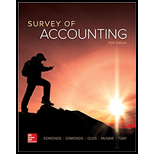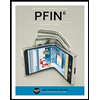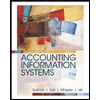
John Riley, a certified public accountant, has worked for the past eight years as a payroll clerk for Southeast Industries, a small furniture manufacturing firm in the northeast. John recently experienced unfortunate circumstances. His teenage son required minor surgery and the medical bills not covered by John’s insurance have financially strained John’s family.
John works hard and is a model employee. Although he received regular performance raises during his first few years with Southeast, John’s wages have not increased in three years. John asked his supervisor, Bill Jameson, for a raise. Bill agreed that John deserved a raise, but told him he could not currently approve one because of sluggish sales.
A disappointed John returned to his duties while the financial pressures in his life continued. Two weeks later, Larry Tyler, an assembly worker at Southeast, quit over a dispute with management. John conceived an idea. John’s duties included not only processing employee terminations but also approving time cards before paychecks were issued and then distributing the paychecks to firm personnel. John decided to delay processing Larry’s termination, to forge timecards for Larry for the next few weeks, and to cash the checks himself. Because he distributed paychecks, no one would find out, and John reasoned that he was really entitled to the extra money anyway. In fact, no one did discover his maneuver and John stopped the practice after three weeks.
Required
- a. Does John’s scheme affect Southeast’s
balance sheet ? Explain your answer. - b. Review the AICPA’s Articles of Professional Conduct (see Chapter 2) and comment on any of the standards that have been violated.
- c. Identify the three elements of unethical and criminal conduct recognized in the fraud triangle.
Want to see the full answer?
Check out a sample textbook solution
Chapter 4 Solutions
SURVEY OF ACCOUNT.(LL)-W/ACCESS>CUSTOM<
- Please provide the correct answer to this financial accounting problem using valid calculations.arrow_forwardCan you demonstrate the accurate method for solving this financial accounting question?arrow_forwardCan you solve this financial accounting problem using appropriate financial principles?arrow_forward
 PFIN (with PFIN Online, 1 term (6 months) Printed...FinanceISBN:9781337117005Author:Randall Billingsley, Lawrence J. Gitman, Michael D. JoehnkPublisher:Cengage Learning
PFIN (with PFIN Online, 1 term (6 months) Printed...FinanceISBN:9781337117005Author:Randall Billingsley, Lawrence J. Gitman, Michael D. JoehnkPublisher:Cengage Learning Financial Accounting: The Impact on Decision Make...AccountingISBN:9781305654174Author:Gary A. Porter, Curtis L. NortonPublisher:Cengage Learning
Financial Accounting: The Impact on Decision Make...AccountingISBN:9781305654174Author:Gary A. Porter, Curtis L. NortonPublisher:Cengage Learning Cornerstones of Financial AccountingAccountingISBN:9781337690881Author:Jay Rich, Jeff JonesPublisher:Cengage Learning
Cornerstones of Financial AccountingAccountingISBN:9781337690881Author:Jay Rich, Jeff JonesPublisher:Cengage Learning Accounting Information SystemsFinanceISBN:9781337552127Author:Ulric J. Gelinas, Richard B. Dull, Patrick Wheeler, Mary Callahan HillPublisher:Cengage Learning
Accounting Information SystemsFinanceISBN:9781337552127Author:Ulric J. Gelinas, Richard B. Dull, Patrick Wheeler, Mary Callahan HillPublisher:Cengage Learning





